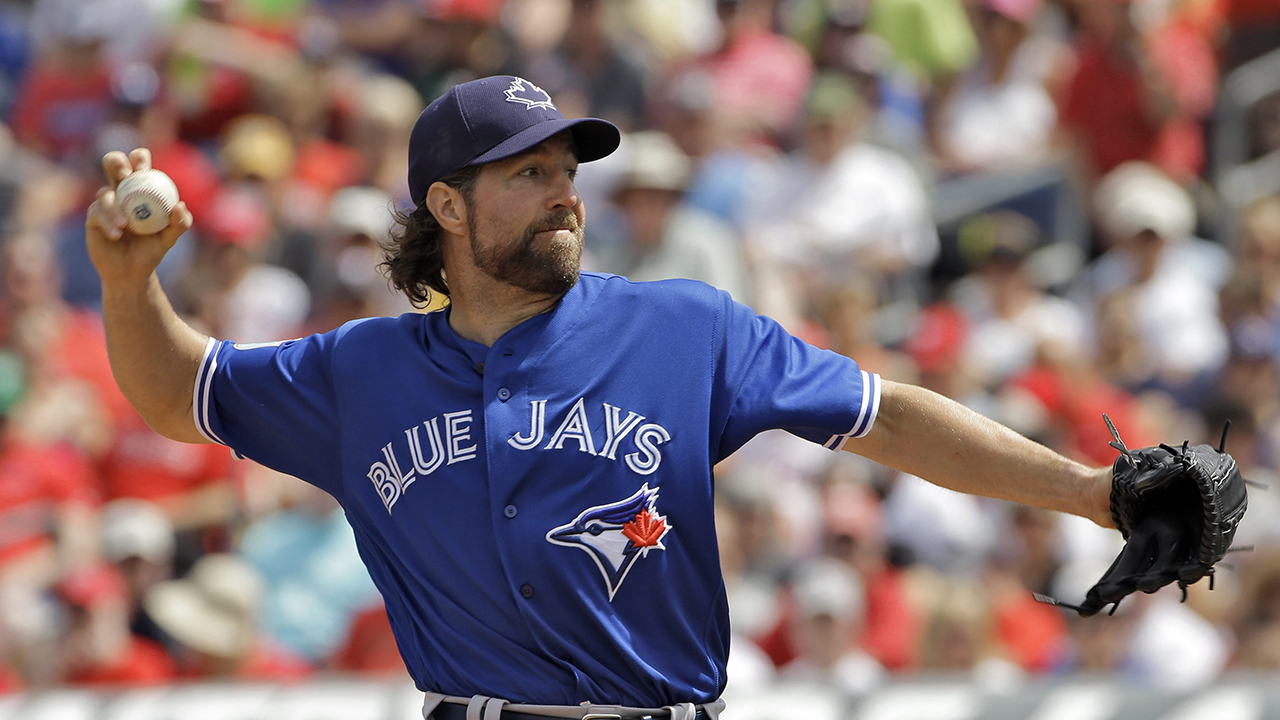DUNEDIN, Fla. – There’s a popular sentiment now that spring training is essentially a meaningless exercise, especially given the in-retrospect absurd springs of your Simon Ponds and Gabe Grosses, or that the athletes show up in something approaching game shape, if not the proverbial “best shape of their life.”
The Blue Jays have done little to dispel this notion in March 2016, with an artfully deliberate approach to inserting regulars into the lineups of the “fake games.” That might be an astute strategy – we shall see – but the result is seeing starting lineups with players who are unlikely to ply their trade any further north than Buffalo.
At the same time, there are few other opportunities to see the totality of an organization assembled in one location. (Or in the Blue Jays’ case, two locations. But let’s not belabour that point.)
It’s been noted often that spring training is about process over results, which might seem like a strange point to underscore when talking about a team that is 9-2-1 at this point in the preparatory schedule. But it can feel like a futile pursuit to invest much into consuming droplets of process data through a firehose, and attempting to discern the validity of any given one.
Whether or not Marcus Stroman brings any of the herky-jerky, quick deliveries anywhere near an MLB mound this year, it started down here. Likewise, if Josh Thole’s newly refurbished, Julio Franco-ish power cut translates into anything of consequence once the games begin counting in the standings, this is where fans got their first look-see.
After giving up a two-run homer against the Phillies on Saturday in an otherwise effective tune-up, R.A. Dickey spoke of trying something different, driving fastballs inside in that situation to left-handed hitters.
“In an in-season game, I wouldn’t have messed with it. But it was a great opportunity and a great spot to be able to try to use it and get some feedback from it, and I got some great feedback. I need to execute a little bit better.”
 Download it now:
Download it now:
iOS | Android | Windows | Special Offer
Granted, you probably shouldn’t aim to find definitive proof to support any pet thesis at this time of the year. But that’s not really the point. You can identify and gather the tiny seeds that might look like the truth by the time you’re harvesting the reasons for a player’s – or team’s – success or failure at the point where games become meaningful.
In 2012, David Cooper crushed pitches in batting practice, and Moises Sierra looked like he was close to crafting his raw skills into something more useful than the performance art piece that he unveiled with the Jays.
Edwin Encarnacion returned to camp that spring with a somewhat tenuous grasp on his roster spot, but a new swing, developed working with Robinson Cano and his dad. At first glance, it looked like a two-handed tennis forehand; the sound off the bat was a bit less “crack” and a bit more “splat,” while the balls didn’t seem to be jumping off the bat and towards the fences.
So if you’d tried to make much out of that information in the spring, you’d have looked like a bit of an idiot.
But at the same time, when newly acquired closer Sergio Santos threw his first spring training pitches as a Blue Jay, one might have been well-advised to notice how many of them bounced in the dirt, skidded past the catcher and made a worrying thud as they dinged off the concrete base of the backstop. With the exception of a few knee-buckling sliders over his two injury-plagued seasons, a lot of Santos’ future results looked a lot like that inning.
Of course, the monumental difference between the 2012 squad and this year’s is just how many questions were open to be answered. Fans certainly hoped and hope to contend. But the second (and final) year of John Farrell’s era followed an uninspiring .500 finish the previous season, and a dearth of truly high-end talent, whereas this year’s Jays roster is stacked with all-stars and coming off its best finish in two decades.
The expectations of success are still there, but having seen legitimate, banner-raising success, one lousy inning from Roberto Hernandez isn’t likely to seem as ominous. Or meaningful.


